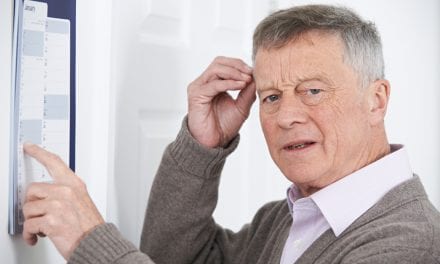Children with Down syndrome are significantly more likely to have obstructive sleep apnea and current treatment options are often ineffective. Recently, a phase I clinical trial tested Inspire Upper Airway Stimulation in this population and found it significantly decreased the apnea-hypopnea index (AHI) in these patients.
In the study, 42 people with Down syndrome and severe obstructive sleep apnea between the ages of 10 and 22 were recruited across five US medical centers. They all underwent surgery to implant the hypoglossal nerve stimulator and were tracked for one year.
At one year follow-up, 27 patients (66%) responded well to treatment; the AHI of these patients decreased by at least 50%. On average, the patients reduced their AHI by 12.9 events per hour following treatment, a drop of more than 51%. Following treatment, 30 patients (73.2%) had an AHI under 10 events per hour, 14 patients (34.1%) had an AHI under 5 events per hour, and three patients (7.3%) had an AHI under 2 events per hour.
Quality-of-life surveys filled out by parents reported significant improvements in daily functioning, behavior, and language.
The procedure was also found to be safe overall. The most common adverse event was tongue discomfort in five patients, which typically resolved in weeks.
According to the researchers, the findings move them closer towards their goal of providing enough data to the FDA to approve the indication of this device for children younger than age 18 with Down syndrome.
“Sleep apnea remains one of the most common conditions that I grapple with working with patients with Down syndrome and their families,” says study co-author Brian Skotko, MD, MPP, the Emma Campbell Endowed Chair on Down Syndrome at Massachusetts General Hospita, in a releasel. “Until now, so many of our patients had run out of treatment options, and their health and well-being were declining. Now, with the hypoglossal nerve stimulator treatment, we may have an effective and safe way to treat apnea and maximize brain health for people with Down syndrome.”
Sleep Apnea’s Disproportionate Impact on Down Syndrome Community
About 80% of children with Down syndrome have obstructive sleep apnea, compared to 5% of the general pediatric population. Children with Down syndrome and sleep apnea are more likely to experience aggressive behavior, brain fogging, and a loss of nearly 10 points in IQ compared to those without.
Surgery to remove the adenoids and tonsils is the traditional first-line treatment option for opening the airway, but studies have shown less than 30% of children with Down syndrome benefit from the procedure. Experts believe this may be because children with Down syndrome are more likely to have a larger tongue. Another procedure, a tongue base surgery, can be painful with limited evidence of effectiveness. What’s more, children with Down syndrome often have difficulty adhering to CPAP therapy due to sensory difficulties.
Upper airway stimulation using a hypoglossal nerve stimulator is a well-studied sleep apnea treatment in adults who can’t tolerate CPAP therapy. The hypoglossal nerve stimulator is a Food and Drug Administration-approved device that is surgically implanted in an outpatient setting. When the device senses someone trying to take a breath, it sends an electrical pulse to the hypoglossal nerve that controls the tongue, causing it to move forward in the mouth, thereby opening the airway.
Findings Fuel Further Study
The new research lays the groundwork to conduct further studies. According to lead study author Christopher Hartnick, MD, MS, director of the Division of Pediatric Otolaryngology and the Pediatric Airway, Voice and Swallowing Center at Mass Eye and Ear, and professor of Otolaryngology–Head and Neck Surgery at Harvard Medical School, the findings raise a need for looking at additional outcome measures besides AHI. Even children who had an AHI reflecting moderate to severe sleep apnea after surgery still reported quality-of-life improvements, which suggests neurocognition might be a more appropriate outcome to study, he says.
“Although our results were compelling, it revealed that we need to carefully look at what other outcome measures we’re using,” Hartnick says in a release. “That’s what our next study is looking for.”
Hartnick andSkotko received a $4 million, five-year grant from the National Institutes of Health (NIH) in January 2021 to study if upper airway stimulation might improve neurocognition and language in young patients with Down syndrome.
“When parents reported anecdotally that the implant seemed to improve speech in their loved ones, we knew that we needed to investigate this further,” Skotko says. “The NIH grant will enable us to formally analyze improvements that the implant may or may not have on speech and cognition.”
The study was funded by Inspire Medical Systems Inc, which provided eight devices for the study, but otherwise did not have a role in its design and conduct. The LuMind IDSC Down Syndrome Foundation also provided funding for the study
“This study was born out of the frustration of not having an effective treatment option for children with Down Syndrome who struggle with sleep apnea,” Hartnick says. “Sleep apnea significantly impacts these children, often affecting their language, behavior, and ability to do well in school. Any diminishment in these areas is critical for families, and our study suggests we may finally have an option to help.”
Photo 243282468 © Seventyfourimages | Dreamstime.com





